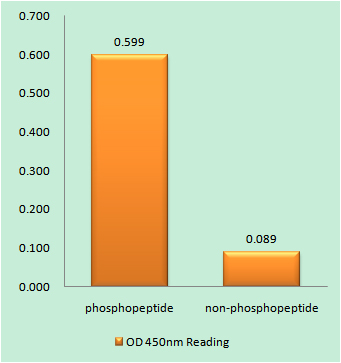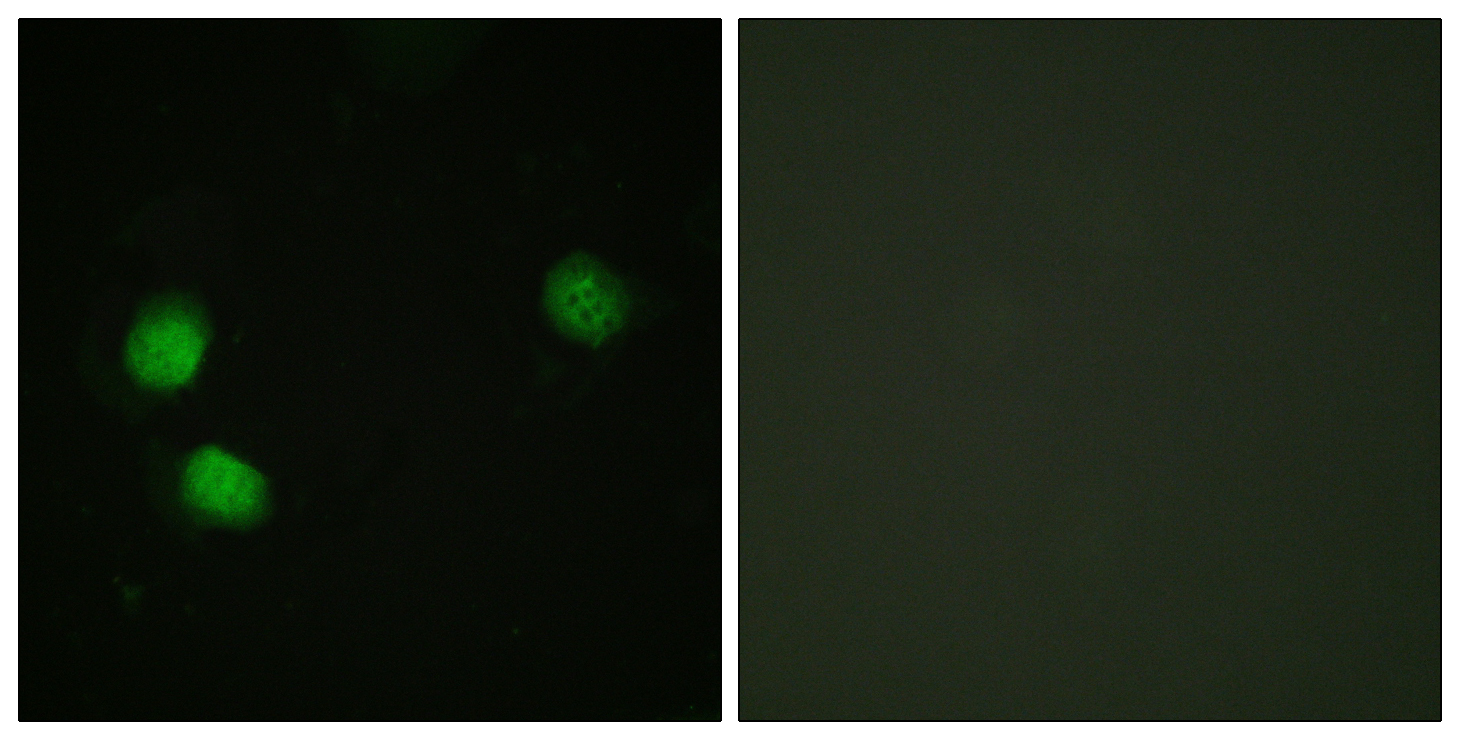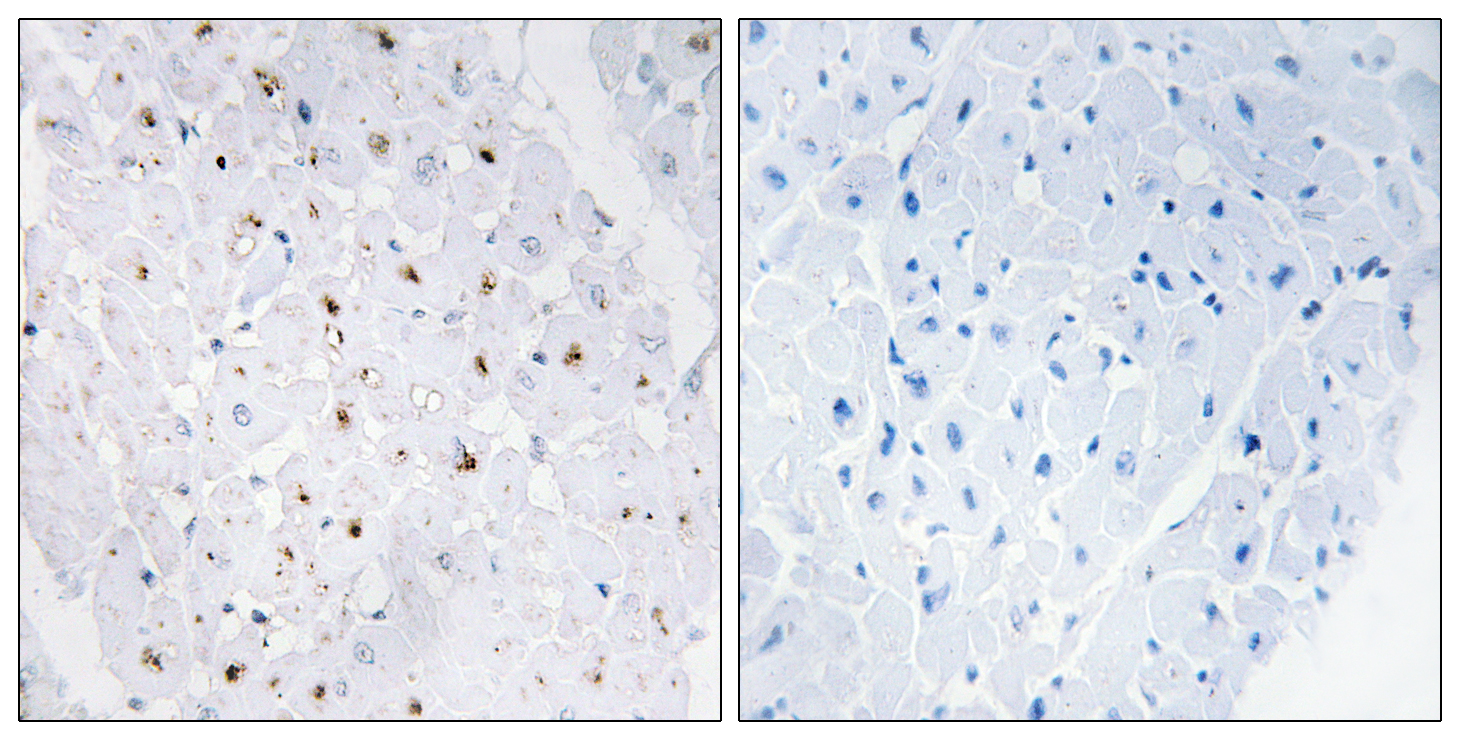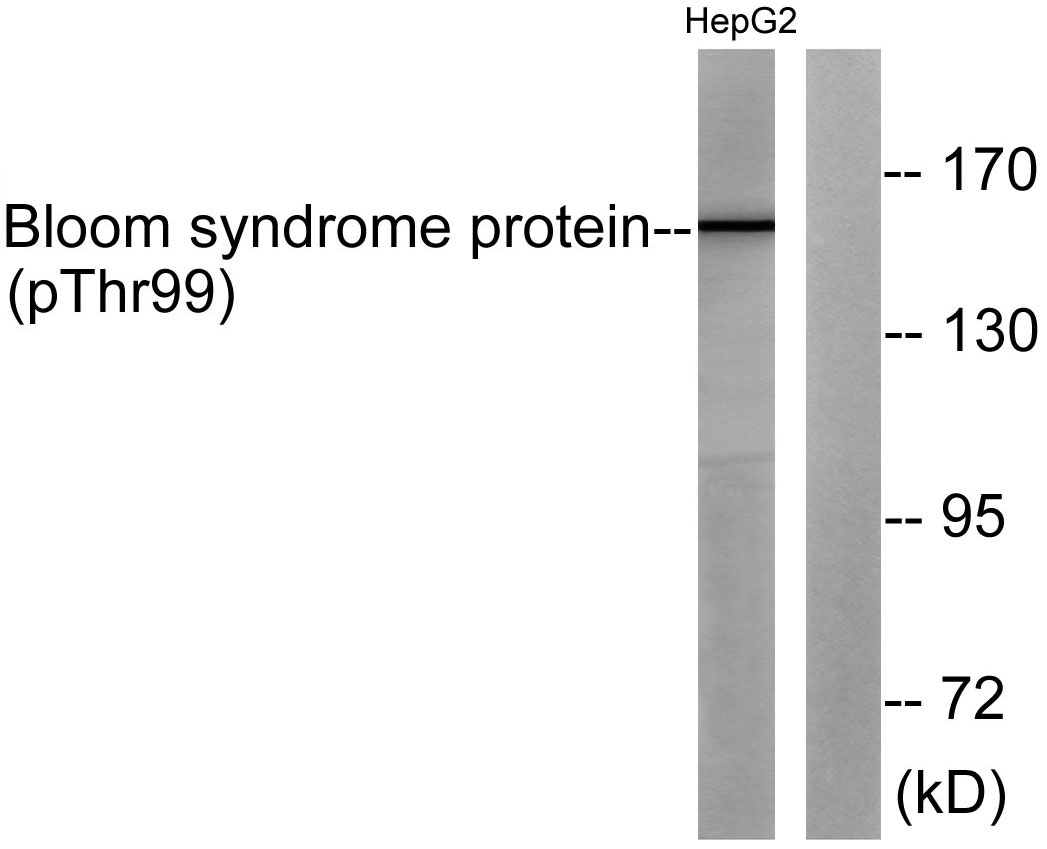BLM (phospho Thr99) Polyclonal Antibody
- Catalog No.:YP0906
- Applications:WB;IHC;IF;ELISA
- Reactivity:Human;Rat;Mouse;
- Target:
- BLM
- Fields:
- >>Homologous recombination;>>Fanconi anemia pathway
- Gene Name:
- BLM
- Protein Name:
- Bloom syndrome protein
- Human Gene Id:
- 641
- Human Swiss Prot No:
- P54132
- Mouse Swiss Prot No:
- O88700
- Immunogen:
- The antiserum was produced against synthesized peptide derived from human Bloom Syndrome around the phosphorylation site of Thr99. AA range:65-114
- Specificity:
- Phospho-BLM (T99) Polyclonal Antibody detects endogenous levels of BLM protein only when phosphorylated at T99.
- Formulation:
- Liquid in PBS containing 50% glycerol, 0.5% BSA and 0.02% sodium azide.
- Source:
- Polyclonal, Rabbit,IgG
- Dilution:
- WB 1:500 - 1:2000. IHC 1:100 - 1:300. IF 1:200 - 1:1000. ELISA: 1:5000. Not yet tested in other applications.
- Purification:
- The antibody was affinity-purified from rabbit antiserum by affinity-chromatography using epitope-specific immunogen.
- Concentration:
- 1 mg/ml
- Storage Stability:
- -15°C to -25°C/1 year(Do not lower than -25°C)
- Other Name:
- BLM;RECQ2;RECQL3;Bloom syndrome protein;DNA helicase; RecQ-like type 2;RecQ2;RecQ protein-like 3
- Observed Band(KD):
- 159kD
- Background:
- The Bloom syndrome gene product is related to the RecQ subset of DExH box-containing DNA helicases and has both DNA-stimulated ATPase and ATP-dependent DNA helicase activities. Mutations causing Bloom syndrome delete or alter helicase motifs and may disable the 3'-5' helicase activity. The normal protein may act to suppress inappropriate recombination. [provided by RefSeq, Jul 2008],
- Function:
- disease:Defects in BLM are the cause of Bloom syndrome (BLM) [MIM:210900]. BLM is an autosomal recessive disorder characterized by proportionate pre- and postnatal growth deficiency, sun-sensitive telangiectatic hypo- and hyperpigmented skin, predisposition to malignancy, and chromosomal instability.,function:Participates in DNA replication and repair. Exhibits a magnesium-dependent ATP-dependent DNA-helicase activity that unwinds single- and double-stranded DNA in a 3'-5' direction.,online information:BLM mutation db,PTM:Phosphorylated in response to DNA damage. Phosphorylation requires the FANCA-FANCC-FANCE-FANCF-FANCG protein complex, as well as the presence of RMI1.,similarity:Belongs to the helicase family. RecQ subfamily.,similarity:Contains 1 helicase ATP-binding domain.,similarity:Contains 1 helicase C-terminal domain.,similarity:Contains 1 HRDC domain.,subunit:Part of the BRCA1-
- Subcellular Location:
- Nucleus . Together with SPIDR, is redistributed in discrete nuclear DNA damage-induced foci following hydroxyurea (HU) or camptothecin (CPT) treatment. Accumulated at sites of DNA damage in a RMI complex- and SPIDR-dependent manner.
- Expression:
- B-cell,Epithelium,Testis,
- June 19-2018
- WESTERN IMMUNOBLOTTING PROTOCOL
- June 19-2018
- IMMUNOHISTOCHEMISTRY-PARAFFIN PROTOCOL
- June 19-2018
- IMMUNOFLUORESCENCE PROTOCOL
- September 08-2020
- FLOW-CYTOMEYRT-PROTOCOL
- May 20-2022
- Cell-Based ELISA│解您多样本WB检测之困扰
- July 13-2018
- CELL-BASED-ELISA-PROTOCOL-FOR-ACETYL-PROTEIN
- July 13-2018
- CELL-BASED-ELISA-PROTOCOL-FOR-PHOSPHO-PROTEIN
- July 13-2018
- Antibody-FAQs
- Products Images

- Enzyme-Linked Immunosorbent Assay (Phospho-ELISA) for Immunogen Phosphopeptide (Phospho-left) and Non-Phosphopeptide (Phospho-right), using Bloom Syndrome (Phospho-Thr99) Antibody

- Immunofluorescence analysis of HeLa cells, using Bloom Syndrome (Phospho-Thr99) Antibody. The picture on the right is blocked with the phospho peptide.

- Immunohistochemistry analysis of paraffin-embedded human heart, using Bloom Syndrome (Phospho-Thr99) Antibody. The picture on the right is blocked with the phospho peptide.

- Western blot analysis of lysates from HepG2 cells, using Bloom Syndrome (Phospho-Thr99) Antibody. The lane on the right is blocked with the phospho peptide.



